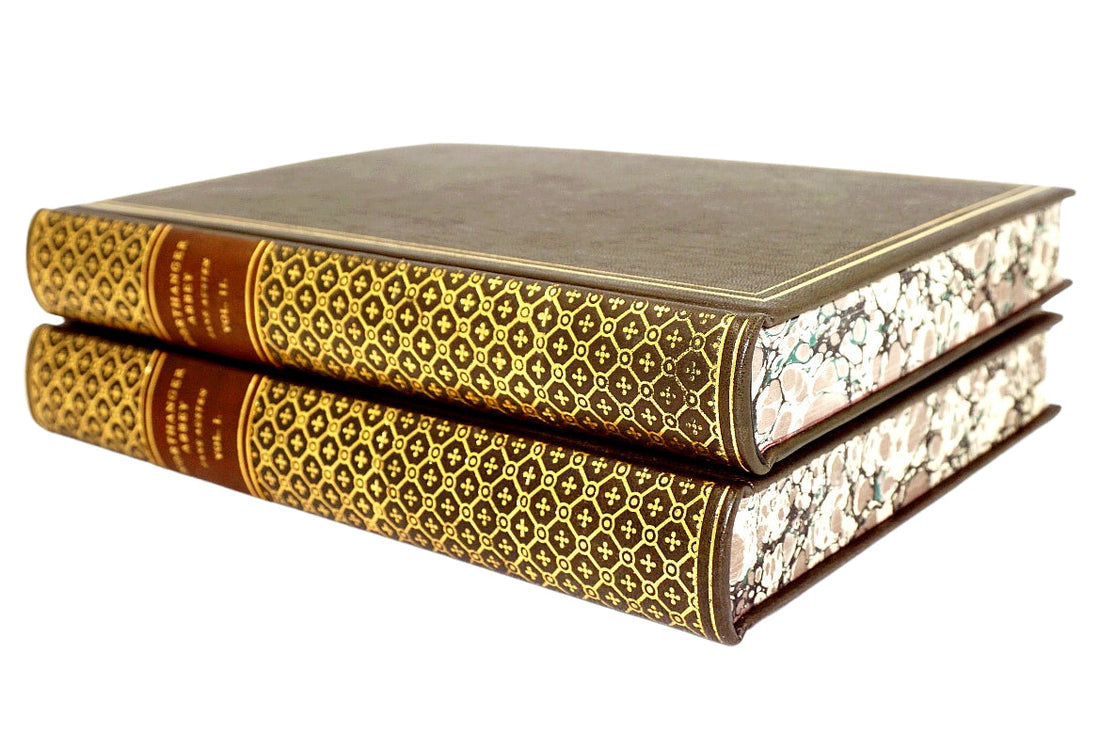
Jane Austen: From Gentry Roots to Literary Success
Born in 1775, Jane Austen grew up in a family considered part of the local gentry, though from its less wealthy branch. Her father, George Austen, was an Oxford-educated clergyman, while her mother, Cassandra, had aristocratic connections. At the heart of the Austen household stood a well-stocked library, reflecting the cultural importance of books in British country homes at the turn of the 18th and 19th centuries. As historian Anna Przedpełska-Trzeciakowska notes, “New trends in art created among wealthier layers of society a significant fashion for owning a library. Not only large estates but also smaller country homes, as well as parsonages occupied by clergymen with intellectual ambitions, considered it a point of honor to have a library, whose richness depended on the owner’s wealth. In no other era were so many private libraries created.” Mark Purcell further observes that the numerous annotations in Austen’s books, written in different hands over time, show they were actively read and engaged with.
Growing up in such an environment, Austen had constant access to books and developed a keen literary curiosity from an early age. “She roamed freely among revered and less revered books, recording her observations with a freedom that would have astonished a Victorian young lady half a century later,” writes Przedpełska-Trzeciakowska. It is therefore no surprise that Jane picked up a pen while still in her teens.
Austen began writing novels in the early 1790s. Her first work, Elinor and Marianne, would later become Sense and Sensibility. This early version, written in the epistolary style common at the time, was completed in 1795. By 1796, Austen was working on First Impressions, known today as Pride and Prejudice, and in the early weeks of 1799 she completed Northanger Abbey, originally titled Susan and later Catherine. Her first completed work, Lady Susan, was written in 1794, when she was just 19 years old.
The journey from writing to publication, however, was far from smooth. Pride and Prejudice was initially offered to publisher Thomas Caldecott in 1797, but he rejected it. Northanger Abbey was sold in 1803 to Richard Crosby & Son, yet the publisher did not issue it, even though Austen received her first payment for her writing: ten pounds, equivalent to roughly 5,000 PLN today. Later, it became clear that this was not a favorable deal, as Crosby retained the rights and demanded a substantial sum to transfer them, delaying the book’s release during Austen’s lifetime.
Supported by her family, Austen persevered, continually revising her works and seeking a publisher. Thomas Egerton eventually agreed to publish Sense and Sensibility, but followed the era’s custom of having the author bear all publication costs. Jane even prepared funds herself to cover any potential losses, reflecting her early financial prudence. In October 1811, the novel was published in three volumes, with a print run of approximately 750 copies, each sold at 15 shillings. Interestingly, Austen’s name did not appear on the title page; she was identified only as “A Lady.” Despite this anonymity, the book succeeded, and by October 1813 a second edition was released, earning Austen 140 pounds. The first recorded purchaser was the Prince Regent, the future King George IV, though Austen herself, sharing the views of her conservative social circle, reportedly disapproved of his notorious behavior.
1813 proved pivotal for Austen. In January, Pride and Prejudice was printed, enjoying immediate success, followed by additional editions that year, including a third in 1817. The print run increased to 1,500 copies, making it a bestseller. For the first time, the novel was attributed to “The Author of Sense and Sensibility,” earning Austen 110 pounds. Her next work, Mansfield Park, was published by Egerton in May 1814, selling out within six months. Seeking greater financial stability, Austen then partnered with the prestigious publisher John Murray, known for publishing Lord Byron and Walter Scott. Murray later published Mansfield Park and Austen’s final novel released during her lifetime, Emma, for which she skillfully leveraged her established literary reputation.
Despite her initial anonymity, Austen’s fame grew. She was invited to dedicate Emma to the Prince Regent, a formal acknowledgment that required royal approval and served as both a bow to authority and an implicit marketing strategy. The novel was released in December 1815, though the publication date shows 1816. Austen continued writing, completing Persuasion, published posthumously in December 1817 alongside Northanger Abbey, marking her first works released under her own name with an accompanying biography. Her first novel, Lady Susan, would not see publication until 1871, long after her death, when the social world she chronicled had already passed into history.
Jane Austen’s life and literary career reveal the challenges and triumphs of a young woman navigating the literary and social landscapes of Regency England. Her works remain timeless, not only for their narrative brilliance but also as windows into the culture, family life, and social expectations of her era, offering a rich experience for readers, scholars, and collectors alike.
